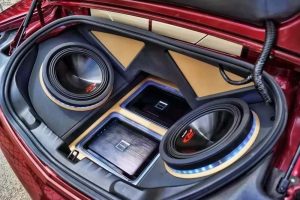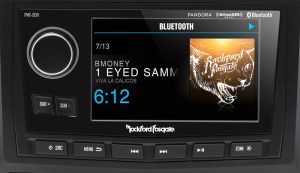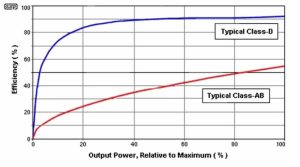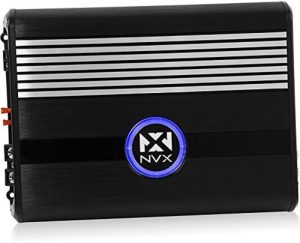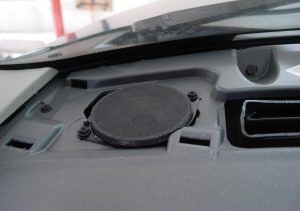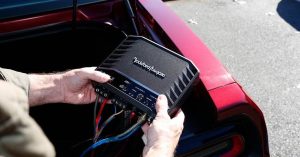Upgrading your car’s audio system sparks excitement for music lovers and casual drivers alike. Crisp vocals, punchy bass, and clear highs transform daily commutes into immersive experiences. But a common question arises: can you upgrade car speakers without an amplifier and still achieve great sound? This guide dives into the pros, cons, and practical considerations of swapping out factory speakers without adding an amp. By the end, you’ll know whether this upgrade suits your needs and how to maximize audio quality on a budget.
Contents
- Why Upgrade Car Speakers?
- How Car Speakers and Amplifiers Interact
- Benefits of Upgrading Car Speakers Without an Amplifier
- Drawbacks of Skipping the Amplifier
- Key Factors to Consider Before Upgrading
- Choosing the Right Speakers for a No-Amp Upgrade
- Installation Tips for Optimal Performance
- Maximizing Sound Quality Without an Amplifier
- When to Consider Adding an Amplifier
- Real-World Examples: Does It Work?
- Common Myths About Speaker Upgrades
- Conclusion: Is Upgrading Without an Amp Worth It?
Why Upgrade Car Speakers?
Factory car speakers often disappoint. Manufacturers prioritize cost over quality, equipping vehicles with basic speakers that produce flat, underwhelming sound. Upgrading to aftermarket speakers delivers noticeable improvements in clarity, bass response, and overall audio fidelity. Here’s why drivers consider this upgrade:
- Enhanced Sound Quality: Aftermarket speakers use better materials, like silk tweeters or composite cones, for richer sound.
- Improved Bass and Treble: Upgraded speakers handle low and high frequencies more effectively, reducing distortion.
- Customization: Choose speakers that match your music preferences, whether you love rock, hip-hop, or classical.
- Affordable Upgrade: Replacing speakers is often cheaper than installing a full audio system with amplifiers and subwoofers.
But can you achieve these benefits without an amplifier? Let’s explore how car speakers work with your existing setup.
How Car Speakers and Amplifiers Interact
Car speakers rely on power to produce sound. In a typical setup, the head unit (your car’s radio or infotainment system) sends an electrical signal to the speakers. This signal drives the speaker’s cone to vibrate, creating sound waves. An amplifier boosts this signal, providing more power for louder, clearer audio.
Factory head units include built-in amplifiers, but they’re often underpowered, delivering 10-20 watts per channel. Aftermarket speakers, while efficient, may not reach their full potential without extra power. However, modern speakers are designed with high sensitivity, meaning they produce quality sound even with low power. This makes upgrading without an amp a viable option for many.
Benefits of Upgrading Car Speakers Without an Amplifier
Swapping out factory speakers for aftermarket models without adding an amp offers several advantages. Here’s why this approach appeals to budget-conscious audiophiles:
1. Cost Savings
Amplifiers, wiring kits, and professional installation add up quickly. By focusing on speakers alone, you keep expenses low. Quality aftermarket speakers start at $50-$100 per pair, making this a wallet-friendly upgrade.
2. Simpler Installation
Installing speakers is straightforward, especially if you choose models that fit your car’s factory mounts. You avoid the complexity of wiring an external amp, which requires running power cables and finding space for the unit. For DIY enthusiasts, this means less time and hassle.
3. Noticeable Sound Improvement
Even without an amp, aftermarket speakers outperform factory units. They deliver crisper highs, fuller mids, and tighter bass. For casual listeners, this upgrade often feels like a night-and-day difference.
4. Compatibility with Factory Head Units
Most aftermarket speakers work seamlessly with factory head units. High-sensitivity speakers (rated 90 dB or higher) maximize the power from your stock system, ensuring loud, clear audio.
5. Scalability
Upgrading speakers now doesn’t lock you into a no-amp setup forever. You can add an amplifier later to boost performance, making this a flexible starting point for building a premium audio system.
Drawbacks of Skipping the Amplifier
While upgrading speakers without an amp offers benefits, it comes with limitations. Understanding these helps you set realistic expectations:
1. Limited Power Output
Factory head units lack the muscle to drive speakers to their fullest. You’ll hear improvements, but the volume and dynamic range won’t match an amplified setup. For bass-heavy genres like EDM or rap, the sound may feel underwhelming.
2. Potential for Distortion
Pushing your head unit to high volumes stresses its built-in amp, leading to distortion. This muddies the sound and risks damaging your new speakers over time.
3. Less Bass Impact
Aftermarket speakers improve bass compared to factory models, but without an amp, low-end frequencies lack punch. If you crave deep, rumbling bass, a subwoofer and amplifier become essential.
4. Missed Potential
High-end speakers are designed to shine with ample power. Without an amp, you may not unlock their full capabilities, leaving some performance on the table.
Key Factors to Consider Before Upgrading
Before you buy new speakers, weigh these factors to ensure the upgrade meets your goals:
1. Your Music Preferences
The type of music you listen to shapes your speaker choice. For vocal-driven genres like pop or acoustic, coaxial speakers with clear mids and highs work well. For bass-heavy tracks, consider component speakers or a setup you can later pair with an amp.
2. Speaker Sensitivity
Sensitivity, measured in decibels (dB), indicates how efficiently a speaker converts power into sound. Speakers with 90 dB or higher sensitivity pair best with factory head units, delivering loud audio with minimal power.
3. Power Handling
Check the RMS (continuous power) rating of your speakers. Ensure it matches or slightly exceeds your head unit’s output to avoid underpowering or overpowering the speakers.
4. Speaker Size and Fit
Confirm that aftermarket speakers fit your car’s factory mounts. Common sizes include 6.5-inch, 6×9-inch, and 5.25-inch. Adapters may be needed for non-standard sizes.
5. Budget
Set a realistic budget. Quality coaxial speakers cost $50-$150 per pair, while component speakers range from $100-$300. Factor in installation costs if you’re not doing it yourself.
6. Future Upgrades
Think long-term. If you plan to add an amp or subwoofer later, choose speakers that handle higher power. This ensures compatibility with future enhancements.
Choosing the Right Speakers for a No-Amp Upgrade
Selecting the best speakers for your car involves balancing quality, compatibility, and budget. Here’s a breakdown of speaker types and top recommendations:
Coaxial Speakers
Coaxial (or full-range) speakers combine a woofer, tweeter, and crossover in one unit. They’re easy to install and ideal for no-amp setups. Popular brands include:
- JBL Stage Series: Affordable, with excellent clarity and high sensitivity (90+ dB).
- Pioneer TS-A Series: Known for balanced sound and strong bass response.
- Kenwood KFC Series: Durable and efficient, perfect for factory head units.
Component Speakers
Component speakers separate the woofer, tweeter, and crossover for superior sound staging. They’re pricier but deliver premium audio. Top picks include:
- Focal Access Series: Crisp highs and detailed mids, great for audiophiles.
- Alpine R-Series: High sensitivity and robust construction.
- Hertz DSK Series: Excellent sound separation for immersive listening.
Tips for Choosing Speakers
- Match Impedance: Most factory head units work with 4-ohm speakers. Check your head unit’s specs to avoid mismatches.
- Read Reviews: Look for user feedback on sound quality and compatibility with low-power systems.
- Prioritize Sensitivity: Higher sensitivity (90 dB+) ensures better performance without an amp.
Installation Tips for Optimal Performance
Proper installation maximizes your speakers’ potential. Follow these steps for a clean, effective upgrade:
- Gather Tools: You’ll need a screwdriver, panel removal tools, wire cutters, and possibly speaker adapters.
- Remove Old Speakers: Access your car’s speakers by removing door panels or dash covers. Disconnect and remove factory speakers.
- Install New Speakers: Secure aftermarket speakers in the factory mounts. Use adapters if needed for a snug fit.
- Check Wiring: Ensure secure connections. Replace old or frayed wiring to prevent signal loss.
- Test the System: Play music at various volumes to check for clarity and distortion. Adjust balance and fade settings on your head unit.
- Soundproofing: Add foam or damping material behind speakers to reduce vibrations and enhance bass.
If you’re not confident in DIY installation, hire a professional to ensure proper setup and avoid damage to your car’s interior.
Maximizing Sound Quality Without an Amplifier
To get the most out of your new speakers, optimize your setup with these tips:
- Tune Your Head Unit: Adjust equalizer settings to emphasize mids and highs while reducing bass to prevent distortion.
- Use High-Quality Audio Files: Stream music in lossless formats (like FLAC) or high-bitrate MP3s for better fidelity.
- Upgrade Speaker Wiring: Thicker, high-quality wires improve signal transfer, enhancing sound clarity.
- Consider a Head Unit Upgrade: If your factory head unit lacks power or features, a new one with better amplification boosts performance without an external amp.
- Add Sound Deadening: Apply sound-deadening mats to doors and panels to minimize road noise and improve acoustics.
When to Consider Adding an Amplifier
While upgrading speakers without an amp works for many, certain scenarios call for extra power. Consider an amplifier if:
- You crave louder, more dynamic sound for large vehicles or open-top cars.
- Bass feels weak, and you want to add a subwoofer.
- You notice distortion at high volumes, indicating your head unit is overtaxed.
- You’ve invested in high-end speakers that demand more power for peak performance.
Amplifiers range from compact 4-channel units to powerful mono amps for subwoofers. Pairing one with your speakers unlocks their full potential, delivering concert-like audio.
Real-World Examples: Does It Work?
To illustrate the impact of upgrading speakers without an amp, consider these scenarios:
- Commuter Sedan: A driver replaces factory 6.5-inch speakers with JBL Stage 602 coaxials. The result? Clearer vocals and tighter bass for pop and podcasts, all powered by the stock head unit.
- Pickup Truck: A truck owner installs Pioneer TS-A6990F 6×9-inch speakers. The high-sensitivity design delivers loud, distortion-free country music without an amp.
- Compact SUV: An audiophile swaps out factory speakers for Focal Access components. While the sound shines, adding an amp later elevates bass and volume for classical tracks.
These examples show that no-amp upgrades suit casual listeners and budget builds, but amp enthusiasts may want more power for premium results.
Common Myths About Speaker Upgrades
Misconceptions about car audio upgrades can cloud your decision. Let’s debunk a few:
- Myth: You need an amp for any speaker upgrade to work.
Truth: High-sensitivity aftermarket speakers thrive with factory head units, delivering solid improvements. - Myth: Upgrading speakers alone won’t make a difference.
Truth: Better materials and design in aftermarket speakers noticeably enhance sound quality. - Myth: All aftermarket speakers require professional installation.
Truth: Many coaxial speakers are plug-and-play, perfect for DIY installs.
Conclusion: Is Upgrading Without an Amp Worth It?
Upgrading car speakers without an amplifier is a smart, cost-effective way to boost your audio experience. You’ll enjoy clearer sound, better bass, and a more engaging drive without breaking the bank. For casual listeners or those on a budget, this upgrade delivers impressive results with minimal effort. However, if you demand earth-shaking bass or concert-level volume, plan to add an amplifier down the road.
To succeed, choose high-sensitivity speakers that match your car’s setup and music tastes. Optimize installation and head unit settings to squeeze out every ounce of performance. With the right approach, your car’s audio system will transform into a mobile soundstage, making every journey a musical adventure.
Ready to upgrade? Research speaker models, check compatibility, and start your audio journey today. Your ears will thank you.

